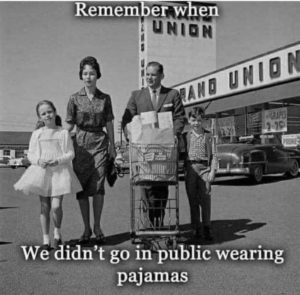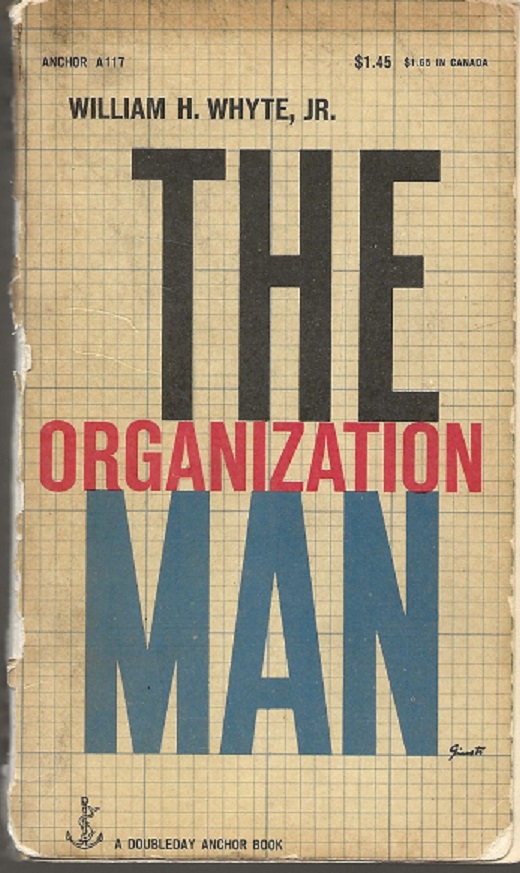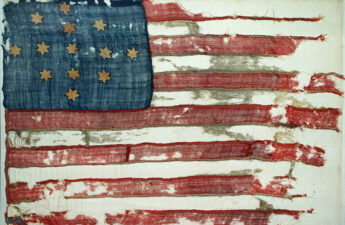The greatest threat to human liberty always was found in the ability of a few men to be able to aggregate the wealth of the nations and use them for their own purposes.
And from that power can come systems that have been known to last a thousand years.
Part I
Before Dwight Eisenhower had become a 5-star general he was an ordinary Kansas farm boy with no greater education or experience than any other farm boy. Then, on the basis of his drawing the blueprints for winning the world’s largest war, he was elected President in 1952. When Ike (a name people commonly referred to him in those days, when I was a teenager) left the Office of president in 1960 he warned America, just three days before he handed the government over to John F Kennedy, in January, 1961, that
“In the councils of government, we must guard against the acquisition of unwarranted influence, whether sought or unsought, by the military-industrial complex. The potential for the disastrous rise of misplaced power exists, and will persist.”
You see, from farm boy to president Ike had seen the emergence of an enemy and an idea even more dedicated to world conquest than Adolf Hitler. That would be the Soviet Union, if you don’t already know, born of an idea of Karl Marx’s that has failed every time it has been tried, killing and starving millions, and which has currently take up abode in China and North Korea.
It is an idea which certain kinds of people, with certain mindsets, and of only a single class, can never let go. It will always be found in our midst.
Eisenhower was only an Army colonel when war broke out in 1941 but by late 1942 he was a general in command of American forces landing in North Africa, a logistically complex landing in three areas across the African coast. That landing represented a new kind of warfare, and was largely of Ike’s design.
Why Ike? His unique planning skill was recognized by Gen George Marshall, Army Chief of Staff, and in getting that invasion job he by-passed several senior officers, including Gen Douglas MacArthur, who once called him a “good executive officer”, to become Supreme Allied Commander of American forces in Europe.
Both Ike and his wife Mamie took a helluva beating those three years, since, naturally both officers and their wives could be petty in their jealousies with such a meteoric rise of an officer junior to them; tacky rumors and whispers.
But General Eisenhower really did represent a new kind of military thinking, a new kind of “front office military thinking” about planning and logistics, what we now call “just in time” coordination, that had never been available in wars past. Bonaparte likely had that mental gift as well, only kept it inside his head. (Some say Donald Trump thinks in this range, and a lot could be explained if he does. It takes special people even to recognize it.) But Ike was neither flamboyant nor charismatic, nor did he push his weight around. Still, no one who could mentally keep up with doing fifteen different things simultaneously. Patton, MacArthur, Montgomery, themselves brilliant tacticians, had to turn their campaign-sized battle plans into suggestions, and then run them through Ike before getting a go-ahead. Patton even had to go and “stand in the corner” on D-Day, 1944 because of some of his attempted circumventions of the boss. Ike knew he could win the invasion without him in the landing phase, but the Germans believed the Allies couldn’t pull off a successful invasion without Patton. So knowing this, Ike got to have his cake and eat it too by causing the Germans to hold divisions in reserve, while Patton had to chomp at the bit, chewing his cud in England. Patton’s 3rd Army entered France in August and rolled straight thru France.
I’m not sure if civilian management schools offered studies into the mind of Eisenhower, but jump ahead to the post-war 1940s and it does seem more than coincidental that the arrival of “The Organization Man” phenomenon, which centered around a 1956 study by William H Whyte Jr, about America’s changed corporate management culture entered American corporate thinking. (My 1957 copy, above, is as underlined as a study-Bible. It’s a very important book which should be on every analyst’s shelf even today. It was still prominent throughout my college days in the 1960s, and a critique of how business thinking had changed.
Whyte’s bottom line was that the changing American corporate culture was dedicated to collectivism, not individualism. Hold that thought.
It’s the only book I’ll recommend you read and keep on your shelf. (It’s available on eBay for as low as $7.)
The book explains not only the new business culture, but the popularization of the new corporate family in television sit-coms such as “Father Knows Best”, “Leave it to Beaver” and “The Donna Reed Show” (all premiering in the mid-50s, so I watched them all). All were in the suburbs and “the dad” commuted each day to an office job, while mom tending to the kids and housekeeping with totally unrecognizable areas of responsibility compared to modern parenting today.

By reading Whyte’s “Organization Man”, and the advent of the planned suburban communities like Levittown in the northeast, you’ll see why these commuter families were important as cultural role models.
It’s been 30-40 years since even smaller American towns and cities have seen an abundance of this sort of social arrangement. And today, three generations later, it shows.
I’m not enough of a student of history to know whether the private sector copied from the military, or vice versa, only that in Gen Eisenhower, the skill was home-bred, not school-learned, which is important to note, for Ike did not envision a “management culture” but rather a mission that needed to be accomplished and simply a better way to fight the enemy.
Hold that thought going forward, for both the mission of Big Business and military today have changed since the 1960s and we would benefit if we inquired into which came first.
I don’t have an answer as to which came first but I do notice similarities, and the cultural indicators both present as well as absent. It does seem that the “Organization Man” culture lamented by Whyte seems to reflect the rapid post-war rise of business school applicants, and business school programs, especially those seeking MBA’s. And mostly on the back of the GI-Bill.
I’m indirectly a product.
My father-in-law was one, and like Ike, was from a Tennessee farm, only with an accounting degree which a football scholarship paid for before Pearl Harbor. One thing men like he learned after three years in uniform, more often in administrative or logistical positions, not combat units, (he made it up to sergeant-rank, E-5), was that the officers he’d served under those three years in Europe and North Africa is that officers had it much better then desk clerks; snappier uniforms, being called “Sir”, being saluted and able to order other men around. They even had their own latrine. (I was an Army captain in the Far East during the Vietnam War, so had a 4-years front row seat to how all that worked out 25 years later.)
My father-in-law grabbed his wife and baby daughter (my wife) and moved to Denver to enter their 2-year MBA program in 1948, using his GI Bill…then returned to Kentucky to take a job with a textile manufacturer who was planning a new, state-of-the art mass-manufacturing facility. He participated in the building of the first, then built two more. In 1989 he retired a millionaire. When I left the Army in 1977 he offered me a position with his company. He felt about me much the same as I feel about smug, arrogant smart-assed 30-somethings on Twitter today. But he wanted to be close to his grandkids…and the corporate attorney’s slot was open…which I blew off. I’ve been a “how things work” guy all my life, so I wanted to learn manufacturing, and for 10 years had the run of the company over five states. And he was not in my chain of command.
He had stack of textbooks in his basement that he’d used at Denver, being the principal books used in business school, which didn’t impress me. But he also had a bookshelf full of the Alexander Hamilton Institute’s “Modern Business”, at least 24 volumes, which he gave me. These I found extraordinary in the fact that they even existed. They were pre-“Organization Man”, and addressed every aspect of a business, from big corporation down to a candy store. And they were sold separately.

I want to divert your attention to this set for a variety of reasons, especially that it represented the “organizational chart” of every kind of company, beginning as early as 1919 and into the 1950s, covering every aspect of a business each subject covered in a single volume…each volume leather bound, gold embossed, and approximately 200 pages of text and charts.
They covered much of the areas changed in the business culture in the “Organization Man” era. (I regret that I gave my set to a Ukrainian “Red bank” president, private banks set up with Communist Party money under Gorbachev. He went all-oligarch soon after the Hammer & Sickle fell, so a lot of good they might have done.)
A Summary: Five volumes were about Sales, Advertising and Marketing, each of which would have its own desk or office in a corporate headquarters, depending on the size of the company. Four volumes covered Office Management. Personnel Management (Human Resources today) got one volume, and probably represents one of the most critical turns in corporate management today, for it has been one of the portals through which so much modern legislation and regulation has intruded on the company’s ability to manage its own personnel affairs, using race and feminism as key anchors. It as also where a lot of companies steered the influx on young women with business degrees in 90s. (After I returned from the USSR in 1992 I began noticing how many interviews I tried to arrange with companies were begun with their HR department, and some sneering redhead who was clearly angry that she had to talk to me in the first place.) That was 30 years ago and I’m told things have gotten much worse. There was also a single volume about Factory Management, including plant safety, another major door into the efficient running of a company by government. There were also volumes on Basic Accounting, Economics (including Adam Smith and David Ricardo)
But most interesting, there was a single volume on Business Ethics…morality! Think about that.)
In the 10 years I was with “The Company” it had undergone major structural changes. It had just been reorganized, having been sold to a “consortium”, better known these days as a conglomerate. In the mid-80s, our consortium owned 5 or 6 companies, including known brands.
The Old Guard in our company, those World War II vets, my father-in-law included, who were Generation One of the Organization Man, had built a national brand which a product, pre-war, had sub-contracted much of its production, directly managing only the final assembly before shipping the product to market; a complex logistical system, but common to textiles. The company had decided in 1951 to become what was known in the industry as “vertical”, meaning everything from cotton to finished product, was done under total company supervision. This was when my father-in-law was hired.
By the late 1970s, that Old Guard were nearing retirement. They had turned the company into a billion-dollar (a lot in those days) Fortune 500 company. But it had been run like fiefdoms, every production factory answering to one of those five members of the Old Guard, the CEO handling all the squabbles.
That organizational design did not fit any textbook models, so the new conglomerate owner decided it was time to reorganize, and replaced thirty years of “manufacturers” with a logistics specialist as CEO. And very quickly, as they began to fill the desks at the new home office with young MBA’s, “manufacturer” had become a kind of epithet among the new corporate personnel. This began about two years before I arrived but accelerated during my tenure. Being an attorney who had already turned his nose up at the corporate attorney’s slot, and having chosen to “learn manufacturing” instead (which they believed was like hoeing a potato garden, where you could get blisters, and stuff like that), and even choosing to live in one of the factory towns rather than have an office at the HQ, I was always something alien to them. There were about 250 of them; planners of one type of another, always having meetings, most of whom had never stepped on a factory floor and still in grade school when the Vietnam War was fought. Probably never even heard Steppenwolf.
For some sense of history, this was still before computers and internet, and word processors were still a new toy when I left in ’89.
But what changed mostly was that difference in the Organization Man cultural perspectives by the new front office.
It was as remote from the products that company made than the modern front office of Disney today is from making cartoons. Class-wise, they looked down, really looked down, on the other 95% of the company who actually made the product and this included a small army of college-educated managers.
One of my favorite quotes from a younger planner, at a meeting, and often repeated by me here, “I could train monkeys to run a factory”, even as several of ours had over 2000 production workers.
That attitude, plus the comment by my father-in-law about how an “Organization Man” should priortize his life, “that to succeed, I had to place family in second place, behind the Company”. That was the straw.
Since I had lived in the Far East for 3 years in the Army, and traveled through the whole region, I had begun checking out China’s persistence in trying to buy their way into our company. I had lab tested their local production and their shop prices in places such as Shanghai, and found them to be of very high quality (notwithstanding quality control was not very important in the domestic Chinese consumer market under communism). All China lacked was access to markets.
But it was hard to feel sorry for them since they had, in essence, a slave labor market, and could under-bid every small manufacturer in South East Asia. I also found out the Chinese cheated…even when they didn’t need to. Manegers even cheated the state. It was cultural, I thought, so I believed it was a thing that other Asian competitors could profit from knowing.
So I figured it was time to say goodbye. My last paycheck with the Company was in 1989. It had run through the first Organization Man generation with flying colors, in part because of the farm boy managers who had built it, who passed it on to a second generation without really having any say in how that would look. And by the early 90s the Company was bankrupt and sold. It ceased domestic production at about the same time. Of course, the “brand” is still out there.
End of Part I




